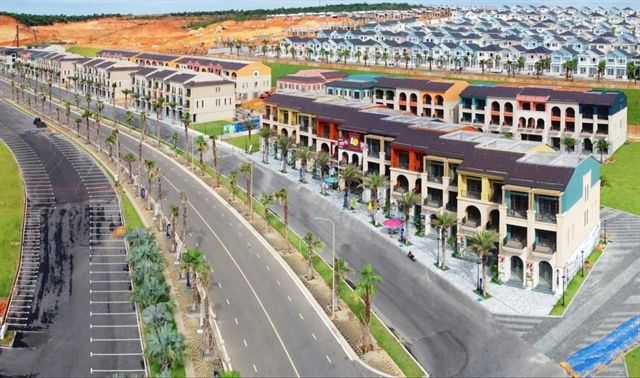HCM CITY — Việt Nam’s luxury coastal real estate market is facing significant challenges due to excess inventory and liquidity issues, industry insiders said.
Property developers are struggling to sell high-end properties, resulting in higher financial costs from bank loans used to develop these projects, they said.
According to a real estate company based in HCM City, the demand for luxury coastal properties has decreased, leading to prolonged liquidity issues in the market.
The current inventory consists of around 30,000 shophouses, townhouses, and resort villas with selling prices offered in the tens of billions of Vietnamese đồng per unit, it said.
In the past five years, the demand for townhouses, resort villas, and seaside shophouses in the price range of VNĐ15-20 billion per unit has reached its lowest point, it added.
More than 90 per cent of these luxury coastal properties remain unsold in the first half of the year, creating a significant financial burden for developers.
Another real estate company listed on the HCM City Stock Exchange said that sales of existing projects have been extremely slow so far this year.
The inventory of seaside villas in southern provinces, priced in the millions of US dollars, has reached a staggering 95 per cent, indicating a significant lack of demand for these properties.
According to a report from the R&D Department of DKRA Group, sales of seaside townhouses and shophouses decreased by 97 per cent in the second quarter compared to the previous year, while sales of seaside villas decreased by 95 per cent during the same period.
Võ Hồng Thắng, deputy director of DKRA Group’s R&D Department, said the inventory and liquidity issues in the luxury coastal real estate market have persisted since 2019, making it the longest-lasting among all other types of real estate.
Developers have implemented various commitment policies such as profit sharing and interest rate support to stimulate market demand, but the measures have not been effective enough, he said.
“There is currently no solution to improve sales amid the overall real estate market’s liquidity difficulties,” he said.
The recovery of the real estate market will likely begin with residential properties that serve essential needs, while resort properties may take longer to regain balance, he said.
“It is expected to take several years for the market to recover from the excess inventory,” he added.
David Jackson, general director of Colliers Vietnam, said that as of the second quarter, the Vietnamese real estate market continued to be on a “bumpy road” with many possible turns ahead.
While institutional investors actively have sought opportunities to gain bigger market shares, individual investors have sought quiet transactions amid price fluctuations, low liquidity and cautious sentiment from buyers.
These two developments are expected to last until the end of this year, he said.

In a positive development, international credit rating agency Fitch Ratings said that with the reduction in interest rates, the credit and liquidity risks of Việt Nam’s real estate have passed their peak.
“The Vietnamese Government’s commitment to curbing the financial bubble in the real estate sector is a positive factor creating stability for the market,” it said.
Last year, Việt Nam began tightening real estate management, focusing on capital mobilisation of developers, which includes stricter regulations on corporate bond issuance.
The real estate industry accounted for 3.4 per cent of the country’s GDP in the first half of this year.
As of June 20, the real estate industry continued to hold the third position with total registered foreign direct investment (FDI) of US$1.53 billion, down 51 per cent over the same period last year.
FDI disbursed in this sector was $500 million, down 43 per cent. — VNS












 Website belongs to
Website belongs to